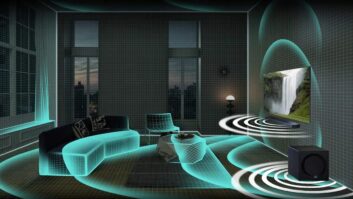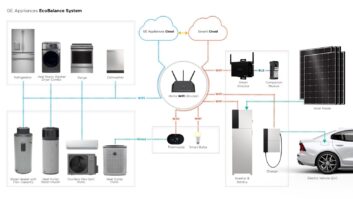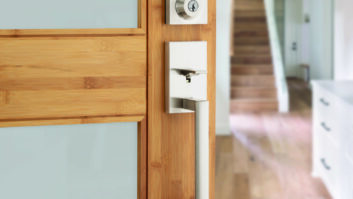NEW YORK — Dolby Atmos promises significant improvements in home theater surround sound, enabling movie makers to precisely place and move multiple individual sounds in three-dimensional space at any given time.
Because each sound is reproduced clearly and distinctly, Atmos delivers a more lifelike experience, Dolby said. Sounds also pan more smoothly around you, and the surround experience is improved no matter where you sit.
To achieve those goals, sound studios attach specific X, Y and Z coordinates to each sound, or object, to describe that sound’s location anywhere in a 360-degree space around the listener at any given time.
As a result, consumers will be able to hear birds fly around them at various heights and distances, toward them, and away from them. They’ll hear torrential rain falling from above them, and in the movie “Godzilla,” they’ll hear the monster roar from above.
Through Atmos-enabled home theater systems available beginning in the third quarter, consumers will be able to play back Atmos soundtracks from Atmosencoded Blu-ray discs and video streams expected to be available sometime in the fall, Dolby said.
An Atmos home theater consists of an Atmos-decoding A/V receiver or preamp processor, a standard Blu-ray player with HDMI output, a smart TV or set-top video streamer, and an Atmos-enabled speaker system in such configurations as 5.1.2, 5.1.4, 7.1.2, 7.1.4, and 9.1.2.
The first number in each number sequence refers to the number of traditional floorstanding or bookshelf speakers. The second number refers to a subwoofer, and the third refers to the number of speakers dedicated to delivering overhead sound.
Atmos, however, is not limited to these speaker configurations. Atmos will support as many as 24 speakers on the floor and 10 overhead speakers. “One of our hardware partners is planning to release an A/V receiver with 32 channels,” said Brett Crockett, Dolby’s sound research director.
Overhead sound can be delivered in several ways.
A Dolby Atmos 7.1.4 speaker system, for example, could consist of a traditional 7.1 speaker setup complemented by four in-ceiling speakers. In lieu of in-ceiling speakers, consumers could opt for two Atmos- enabled front left-right and two Atmos-enabled back-surround speakers. These speakers come with integrated height driver on top, angled up, crossed over at a Dolby-specified frequency, and driven by its own amplifier channel. The height drivers place individual sounds overhead sounds by reflecting them off a ceiling.
These height drivers are designed for rooms with ceiling heights of 8 to 9 feet, but Crockett said testing shows users would “still hear incredible Dolby Atmos sound in rooms with ceilings as high as 14 feet, though the effect may become more diffuse in rooms with higher ceilings.”
Consumers who add angled, upward-firing height drivers will get the best overhead sound effects with flat, not vaulted, ceilings made of acoustically reflective material, such as drywall, plaster, concrete or wood, Crockett said.
In lieu of replacing existing home-theater speakers, some consumers will get the option to place an active Atmos speaker module on top of their existing speakers, if the speakers are designed to accommodate them, or “on another nearby surface,” Crockett said.
As for Atmos sources, Dolby promises fall availability of “Atmos in TrueHD” on Blu-ray discs and “Atmos in Dolby Digital Plus” through video-streaming services.
TrueHD is already approved for use on Blu-ray discs, and Dolby Digital Plus is already used for online video streaming, so Dolby “invented new scalable algorithms and extensions to Dolby TrueHD, our Blu-ray format, and Dolby Digital Plus, which is used by leading streaming video providers,” said Crockett. “Both formats now support Dolby Atmos sound, meaning that you’ll be able to play Dolby Atmos movies from your Blu-ray player or through your favorite streaming service.”
Any Blu-ray player that conforms to the Blu-ray specification can play a Dolby Atmos movie without a firmware update, he said, as long as the player’s HDMI audio output is set to audio bitstream output mode, he said.
Atmos-enabled versions of the Dolby soundtracks will add embedded Atmos metadata into the bitstreams much like chapter ID metadata. The Atmos metadata, which assigns XYZ coordinates to individual sounds, will be processed by an Atmos decoder.
Existing AVRs with standard TrueHD decoders will play back the “Atmos in TrueHD” soundtrack just fine, suppliers told TWICEs.
Dolby’s Crockett also noted that traditional stereo, 5.1-channel and 7.1-channel content played back through an Atmos-enabled AVR will automatically be adapted “to use the full capabilities of your new system, including your overhead speakers, ensuring that you hear realistic and immersive sound.”













